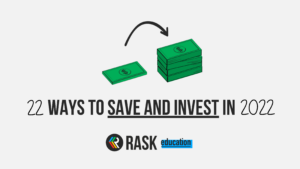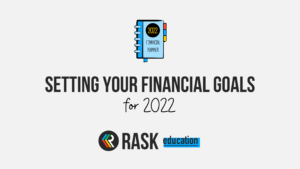Defined: a hedge fund is a special type of managed fund. A hedge fund can use more than one type of investment strategy to generate returns. They often have higher fees.
The Basics of Managed Funds
A managed fund is a pool of investors’ money, which is invested by a professional. For example, 1,000 investors invest $10,000 each into a special bank account and get 10,000 “units” in return. That is, $1 might buy you 1 unit.
Once the money is in the fund, the professional fund manager (which may be an individual, a group of analysts or an entire company, will invest that money. If the investments do well the unit price will increase.
If you had invested $10,000 and the ‘unit price’ (which is normally published on the fund manager’s website) went up 10% (to $1.10 each), your original investment is now worth $11,000 (10% more). You could sell your units (also called a withdrawal or ‘redemption’) and take your cash.
To learn more about managed funds, check out our blog post: How Does A Managed Fund Work and watch the video below.
Why Is It Called A “Hedge” Fund?
Hedging simply means “protection against risk”. Hedge funds claim to be able to provide some protection against falling prices because they can use more than one strategy.
For example, someone who invests in shares might “hedge their bet in shares” by investing in something which moves in the opposite direction of share prices. If share prices fall their other investment will rise in price (canceling out the effect of some or all of the share price fall).
Many hedge funds investing overseas will “hedge” the currency exposure. Meaning, they enter into a contract with a bank to make sure they’re not affected by changes in currencies.
For example, if the Australian dollar falls 10% the hedge fund would be protected by its contract with the bank.
Difference Between Hedge Funds And Managed Funds
Normal ‘vanilla’ managed funds might use one strategy (e.g. “we aim to buy shares that go up in price”).
Important tip: If you buy shares expecting them to increase in price you’re said to be going “long”. If you bet on a downwards or falling share price you’re said to be “short“.
Hedge funds often use more than one strategy and they often buy all types of different investments (shares, derivatives, other managed funds, property, direct companies or infrastructure, etc.).
Long Short
Whereas a normal “long-only” fund manager might try to find undervalued shares (buy them, then wait for the price to rise), a hedge fund manager can do that andtry to make money from falling share prices (“short”).
A fund which bets on rising and falling share prices is called a “long-short fund“.
Why Use A Long-Short Strategy?
Chances are you have heard of people making money when prices fall. For example, The Big Short, is a great book detailing the story of hedge funds making millions/billions of dollars when property markets and share markets crashed during the Global Financial Crisis (GFC) of 2008/2009.
Typically, investors use long-short strategies for two reasons:
- For protection against falling prices
- To make money (some investors only bet on falling prices)
Market Neutral Strategies
Another very common hedge fund strategy is what’s called “market neutral“.
As you may have guessed from reading about long-short strategies, “market neutral” hedge funds attempt to cancel out or neutralise the effect of falling share prices.
If you have ever looked at a sharemarket chart (e.g. Dow Jones, ASX 200, S&P 500, etc.) over a long period of time (5 years or more) you will notice the market goes up and down many times. There are crashes & corrections, big rises and times when the market goes sideways.
Because the markets bounce around a lot, it causes something called “volatility” (or the random ups and downs). Prices can fall 10% one week then rise 5% the next.
That type of bouncing can be scary for some investors — especially those who are not truly investing for the long run or do not understand what they’re invested in.
Market neutral hedge funds try to cancel out the volatility/bouncing by making investments that go up in price when the market goes down and vice versa. It’s a “smoothing” strategy.
However, it doesn’t always work!
Merger Arbitrage
Another hedge fund strategy is “merger arb”, which when the fund manager profits from buying into big corporate takeovers or mergers.
For example, let’s say a Company A’s shares currently trade at $10 each. Tomorrow, a competitor announces it will buy the company for $15 each in 3 months (i.e. they will “merge”). Meaning, shareholders can get a 50% profit!
Normally, depending on the risks, during the three-month window until the “merger” deal goes through, the share price of Company A will trade close to $15 (e.g. at $14).
A “merger arb” hedge fund tries to buy the shares at $14 and collect the $1 profit when the deal goes through. Of course they won’t buy into every deal and there are many risks to doing this.
That’s why some investors say “merger arbitrage is like picking up pennies in front of a steamroller — get it wrong once and you’re toast!”
VERY IMPORTANT POINT
The volatility/bouncing in share prices or a hedge fund’s returns is normally measured using something called BETA.
According to academics, a beta of 1.0 means a hedge fund strategy has the same risk/volatility as the entire sharemarket (the sharemarket has a beta of 1). Meaning, ‘it’s just as risky‘.
A beta of MORE than 1.0 means you have MORE risk/volatility.
A beta of LESS than 1.0 means you have LESS risk/volatility.
For example, a hedge fund using a “market neutral” strategy might have a beta of 0.5 — meaning, historically, the strategy has proven to be less risky than the sharemarket as a whole (e.g. ASX 200).
That’s not to say it’s free from risk — it only means it has had done less ‘bouncing around’ compared to the sharemarket.
What’s more, Beta is only one measure of ‘risk’ and it is highly academic. For example, what’s the beta of your investment property? The most likely answer is, “I don’t know” followed by “who cares!”. The fact that something has a high or low beta shouldn’t be the only measure used to assess the risk and return of an investment!
Derivatives – Options, Futures & Forwards
Hedge funds often trade legal contracts with other investors to generate a return or managed risk.
As a whole, these contracts are often just called “derivatives” — but there are many different flavours or types. They are called “derivatives” because they “derive” their value from something else. For example, a derivative’s price might go up if a company’s share price goes down.
The most common types of derivatives used by hedge funds are options, futures or forwards.
What are they?
Each of these contracts are different and can be complicated. But all you need to know for now is that they are contracts to do something in the future.
For example, a hedge fund manager might enter into a contract to sell his shares in Company X for $10 in 3 months. Another investor says “yes, I’ll agree to that”.
After three months, if Company X’s share price is $8 the hedge fund manager can say, “hey, investor! We signed a legal contract, so you must buy my shares for $10.”
So even if the share price is just $8 on the share market, the investor must buy the shares from the hedge fund. (that would be a good trade for the hedge fund).
Why Are Hedge Funds Paid So Much?
As you can see, hedge funds can get pretty complicated. Some big hedge fund managers can be paid hundreds of millions of dollars in fees and bonuses.
Often, hedge funds are run by:
- Smart people
- With shiny suits, and
- Big marketing budgets
For individual investors wanting to invest $10,000 with one of these funds it can cost a lot more than it would to invest in a ‘vanilla’ managed fund or index fund.
To learn more about index funds, check out our blog post: What Is An Index Fund? and watch the video below.
Is It Worth It?
Here’s one amazing thing about hedge funds…
Even though these fund managers are super smart, paid lots and can do really well for their investors from one year to the next almost all of them have performed poorly for investors over long periods of time.
There are many reasons for this but one of the reasons is fees, another is the risks involved.
Some funds managers have excellent track records and are worth paying to invest in. Unfortunately, it’s very hard to know for sure which one is going to do well.
Risks
Depending on the strategy used, the fund manager and the markets, hedge funds can range from moderate risk right through to extremely risky.
That’s why it’s important to make sure you understand the strategy or speak to a professional adviser who can explain the risks — before buying!
Some of the risks include:
- Liquidity: sometimes (like in the bad times) it can be very hard to get your money out of a hedge. When they ‘blow up’, it might never come out (or if it does you might only get a fraction of what you put in).
- Gearing/leverage risk: Many/most hedge funds use something called “gearing” or “leverage” to boost the returns of their investment portfolio. For example, in simple terms, a hedge fund might use debt or borrowed money to amplify the potential returns (remember it doesn’t always work!). While most hedge funds try to secure some form of downside protection (e.g. using derivative contracts to avoid losing too much on one position), if they get an investment wrong it can be worse than expected due to the leverage/gearing.
- Key person risk: quite often with hedge funds there are one or two really smart people running the show. If they decide to stop, get sick or something else happens, the returns can fall away.
- Performance risk: Past performance is not a guarantee of future performance — no matter what ANYONE says. Tip: If you think you’ve found a hedge fund with really good performance, make sure it’s the same team of people running it today as when the performance was achieved. There’s no point relying on the performance is the people who achieved it cannot be found on the website!
- Backtest & Marketing risk: Sometimes, the pictures look too good to be true, the strategy “makes sense”, the fund manager and analysts are “wicked smart” and “they ran a simulation or backtest of the strategy over more than 20 years of data and it worked really well”. Don’t be fooled into thinking that strategies will always work going forward. For example, during the GFC many hedge funds thought they were protecting against risks (because they modeled it) but they went out of business!
The number one rule is: don’t lose your money.
Know the risks, diversify and remain humble.
Again, you should always consult a licensed and trusted financial adviser before doing anything. This information is factual information and should not be considered financial advice.
[ls_content_block id=”27643″ para=”paragraphs”]



